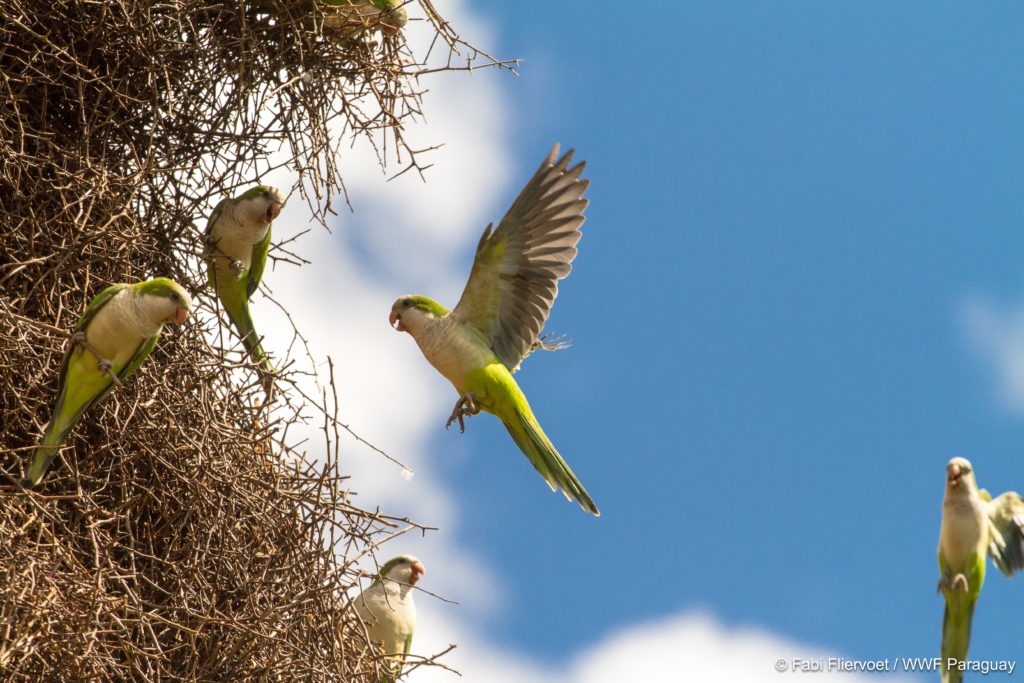Land Use Change in Savannahs and Grasslands –
Approaches by Policy Engagement, Land Use Planning and Best Management Practices
Project goals and activities
The project will build capacity for more climate smart land use planning and practices in the project regions and develop knowledge on grassland and savannah ecosystems. Capacities for land use planning and management will be built across the local, national and international scale. The project raises awareness at the international level, and national banks, as well as local producers, will test and communicate new approaches to address the drivers of land use change and greenhouse gas (GHG) emissions caused by agricultural production.
 Better Management Practises (BMPs) for climate smart agriculture will be developed and tested with palm oil producers and cattle farmers in the Llanos, and with soy and cattle farmers in the Pantanal. Knowledge about the ecological and economic benefits of these BMPs on the farm level will be collected and lessons learned shared. The project will also share knowledge with the international scientific community, national and regional authorities, and producers as a strategy to build capacity and communicate these new approaches. It also accounts for the dissemination of lessons learned so that other regions with a similar context can replicate activities.
Better Management Practises (BMPs) for climate smart agriculture will be developed and tested with palm oil producers and cattle farmers in the Llanos, and with soy and cattle farmers in the Pantanal. Knowledge about the ecological and economic benefits of these BMPs on the farm level will be collected and lessons learned shared. The project will also share knowledge with the international scientific community, national and regional authorities, and producers as a strategy to build capacity and communicate these new approaches. It also accounts for the dissemination of lessons learned so that other regions with a similar context can replicate activities.
National banks will be engaged into the project to raise awareness about social and environmental risks of agricultural production and capacities will be built on the financial incentives for producers, considering environmental and social safeguards and the reduction of greenhouse gas emissions.
In Paraguay, the “SuLu” methodology will be used as a blueprint to create a sustainable land use map that identifies highly biodiverse grasslands, wetlands, forests, and protected areas, as well as areas with high carbon stocks.

In Colombia, the already existing “SuLu maps” will be used as the baseline for this project and will be complemented with additional data on hydrological and carbon dynamics to include water availability and GHG reduction potential in more detailed land use plans.

Effects and outputs beyond the project
The project raises the level of ambition concerning climate mitigation by maintaining the carbon reservoirs of savannahs and wetlands. Adopting climate smart production practices in cattle, soy and palm oil production substantially increases soil organic matter, while also improving water holding capacity, reducing soil erosion, and improving water quality. The inclusion of local producers, as well as the financial sector and the scientific community, will support the transformative shift to a low-emission development in both partner countries.
The project will prove through the development of pilot projects with local producers, that Better Management Practices (BMPs) taking into account climate smart practices will benefit both the producers and the environment. They will reduce pressure on forests and natural savannahs, so that deforestation and ecosystem degradation will be reduced. The BMPs will improve water and air quality, and consequently also the wellbeing of local communities.
The project’s strategy to achieve long-lasting change and replication is based on mainstreaming sustainability criteria into land use planning and the private sector’s investment decisions. It will achieve a sustainable impact by developing capacities across the local, regional, and international levels. The project results will be presented internationally to allow the greater scientific community, investors and consumers to draw on lessons learned and enable replication within the biomes, at the national level, and globally. The project partners will develop an exit strategy at the end of the project to ensure that the achievements of the project will be conserved and further developed in the future.
within the biomes, at the national level, and globally. The project partners will develop an exit strategy at the end of the project to ensure that the achievements of the project will be conserved and further developed in the future.



